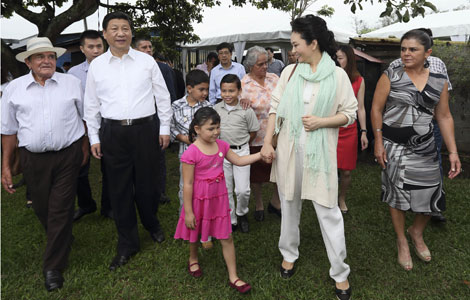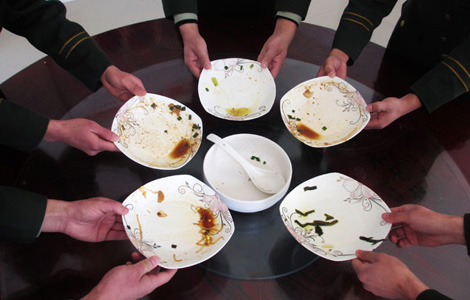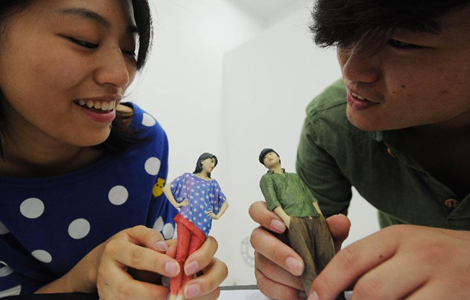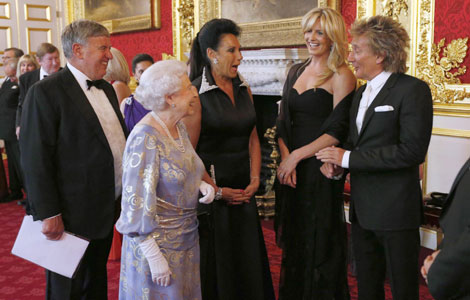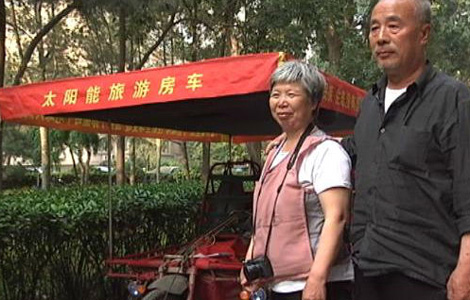Gillard visit reflects region's rising status
Updated: 2013-04-13 07:52
By Wang Hui (China Daily)
|
||||||||
The multi-faceted results Australian Prime Minister Julia Gillard's visit to China achieved this week indicate the two countries are determined to lift their bilateral ties to a higher, more mutually beneficial and healthier level.
Among the series of agreements Beijing and Canberra signed during Gillard's visit, the most significant is the one on elevating their relationship to a "strategic partnership". In an apparent move to substantiate their strategic partnership based on mutual trust and common prosperity, Premier Li Keqiang and Gillard announced on April 9 that their countries will maintain high-level visits and enhance mutual strategic trust by starting such mechanisms as diplomatic and strategic dialogue and strategic economic dialogue.
Under the new mechanisms, the Chinese premier and Australian prime minister will meet every year, so will the two countries' foreign ministers and heads of economic departments. The Australian media applauded the move as a "leap forward", saying China has similar arrangements only with the United Kingdom, Germany and Russia.
Smooth communication and frequent exchanges at high levels are crucial to the cementing of political ties, because they help deepen mutual understanding and build mutual trust.
For quite some time, political ties have been widely perceived as the lame duck of bilateral relations. Analysts cited the 2009 Stern Hu (or Rio Tinto) case, which plunged bilateral ties to the lowest level in years, to say that Canberra and Beijing lacked an efficient communication channel.
But now, there is a new political architecture between China and Australia, which not only epitomizes the importance both sides attach to improving bilateral ties, but will also help strengthen cooperation in economic and other fields.
During Gillard's visit, the two countries also signed a new currency deal, which allows the use of the Australian dollar and the renminbi in direct trade. In fact, the agreement was put into practice in China on April 10 and will make conversions cheaper and quicker for Australian businesses. Earlier, Beijing has only granted similar status to the US dollar and the yen.
The new currency deal could be seen as a barometer of the high degree of the two economies' interdependence. Economic cooperation, a cornerstone of bilateral ties, has been progressing smoothly in recent years except for the row over Chinese investments in Australia. High-ranking Australian officials, Gillard included, have said the country welcomes Chinese investors, but they need to do more to match their words with action. The suspicions raised (and the restrictions imposed) by Australians from time to time have dampened Chinese investors' enthusiasm for investing in that country.
China and Australia also discussed the most sensitive issue of defense during Gillard's visit and agreed to start new initiatives between the Australian Defence Forces and the People's Liberation Army, which will include a strategic policy exchange to discuss regional security issues. The military-to-military exchanges will help build strategic mutual trust and prevent misunderstandings and misjudgments between the two countries.
Australia has played an active part in pushing forward the "pivot to Asia" strategy of the United States, although insightful people in China and Australia both have suggested that Canberra not boost its traditional alliance with Washington at the cost of its ties with Beijing. The message, it seems, has finally been heeded by Australia.
In October last year, Australia issued its "Asia century" white paper, acknowledging Asia's growing role on the world stage and saying that it was willing to engage on a broader and deeper level with the region, especially with its major players such as China and India.
The positive results of Gillard's visit to China indicate Australia is translating its vision into action. And there is every reason to believe that Beijing and Canberra are moving toward an even brighter future of cooperation.
The author is a senior writer with China Daily. E-mail: wanghui@chinadaily.com.cn
(China Daily 04/13/2013 page5)
Most Viewed
Editor's Picks

|

|

|

|

|

|
Today's Top News
Relationship 'relaunched'
Good start expected for summit
Xi, Mexican president discuss bilateral co-op
Cooperation to drive mutual growth
Chinese president arrives in Mexico for state visit
China is victim of hacking attacks
US to be largest trade partner
China joins fight against hacking
US Weekly

|

|
